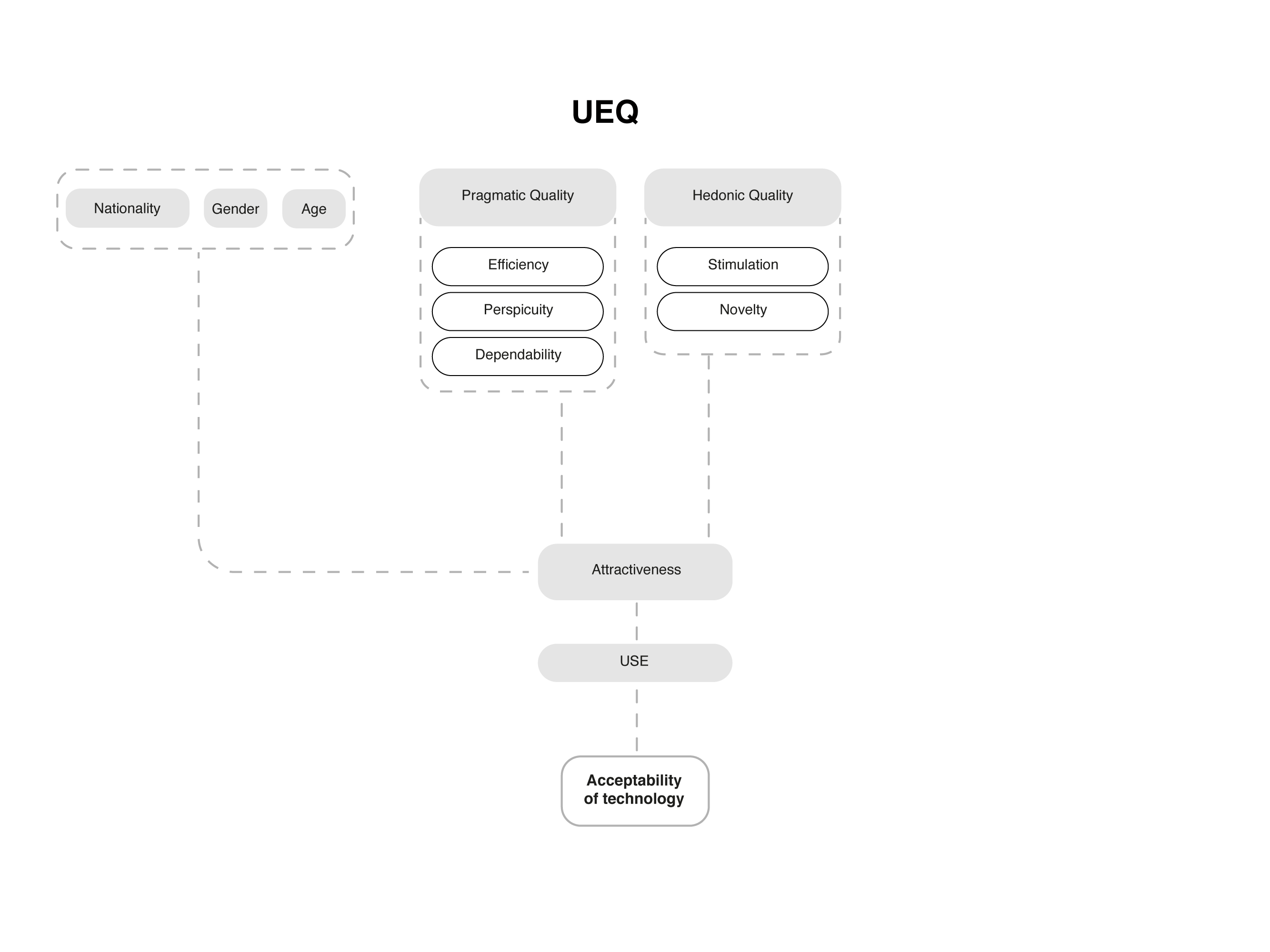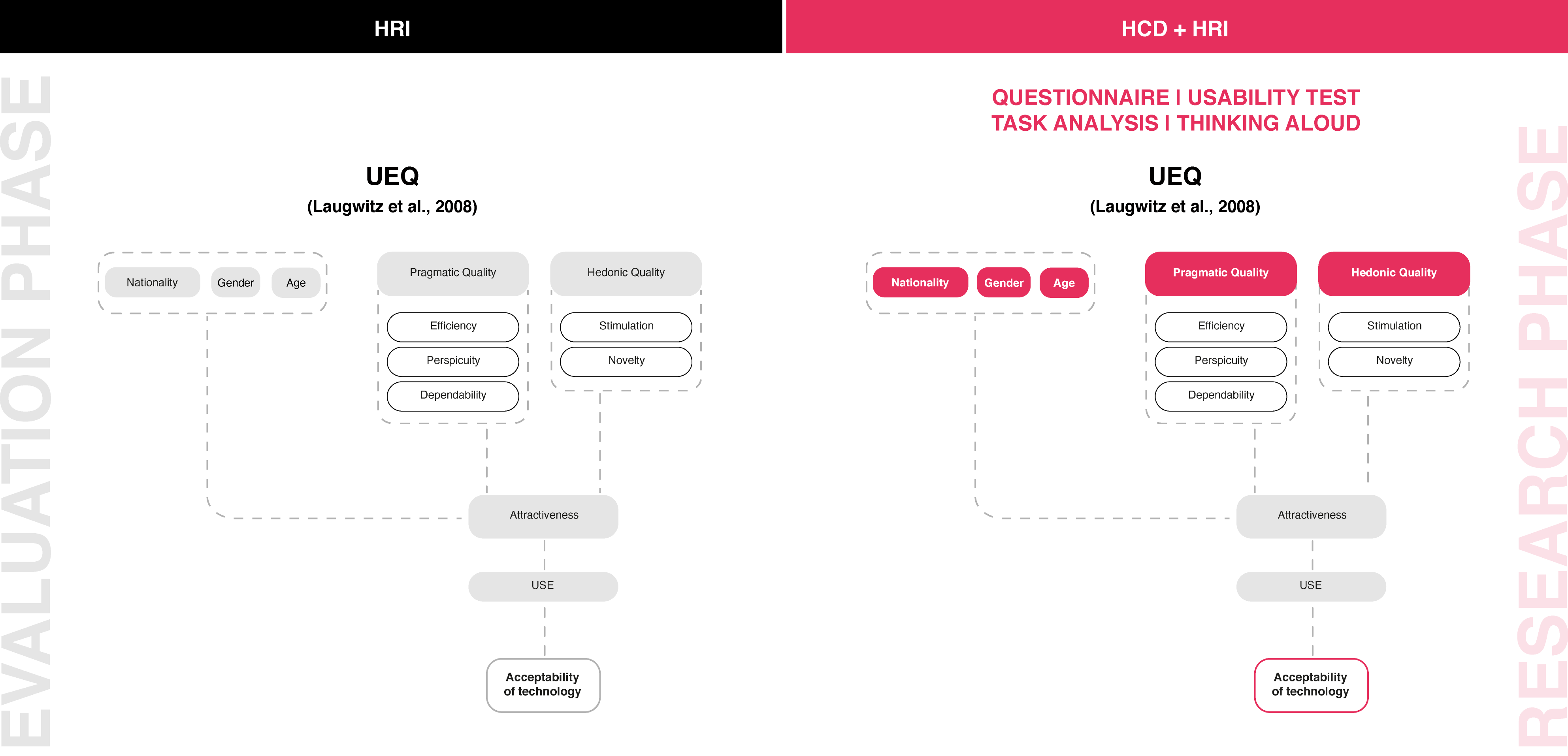UEQ
Developed by Laugwitz et al., (2008)
User Experience Questionnaire
The UEQ method was developed by Laugwitz et al., (2008) with the aim of obtaining feedback from users on their experience of use following interaction with a product/system. Although the UEQ was not developed specifically to assess HRI, it is widely used in robotics to assess the User Experience (e.g. Gerlowska et al., 2018).
The UEQ aims to assess the globality of the User Experience through variables that determine the pragmatic and hedonic qualities of the product and other factors (age, gender, nationality) that influence the perceived attractiveness of the product.

HCD
HRI
Through HCD methods it is possible to analyse some of the EUQ variables in advance, in order to define the design requirements useful for the acceptability of robotic technologies. The HCD methods considered most effective in relation to UEQ constructs are: Questionnaires, usability tests, task analysis, thinking aloud. Below is the architecture of the UEQ method and the relationships between its constructs that determine the acceptability of the technology. In evidence are the variables influencing the acceptability that can be analyzed in advance through the HCD methods identified in the upper part of the scheme (questionnaire, usability test, task analysis, thinking aloud).
